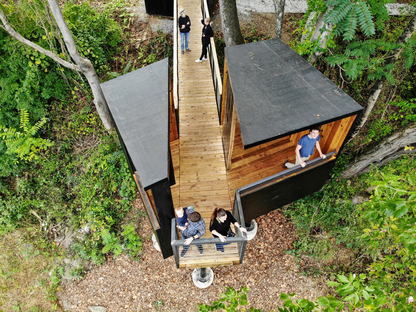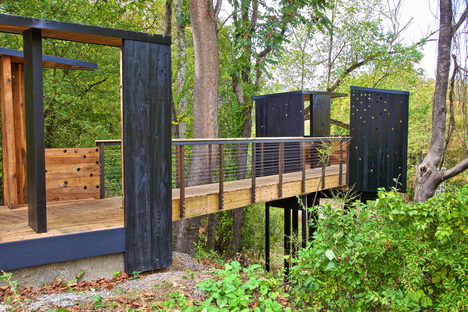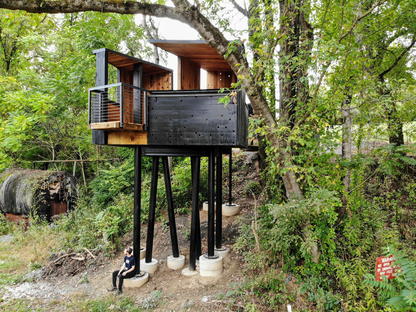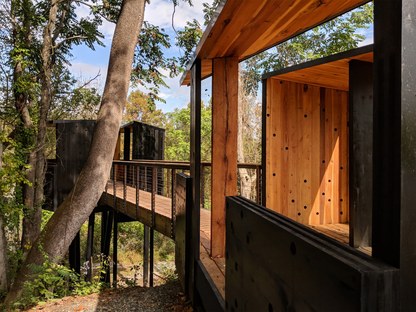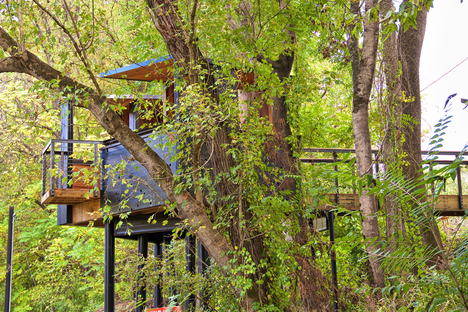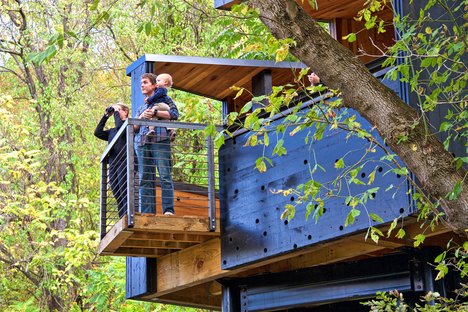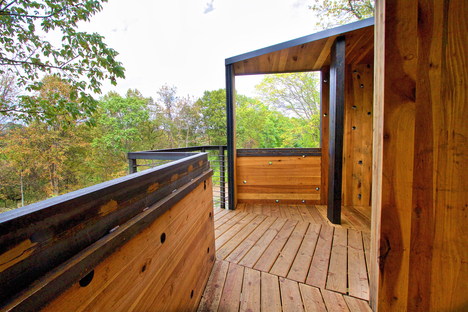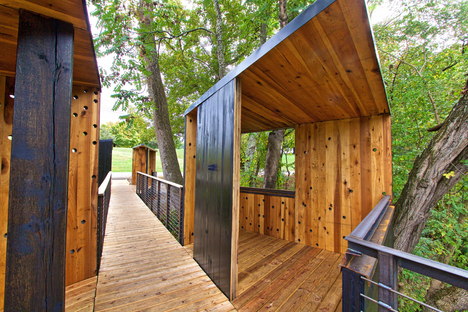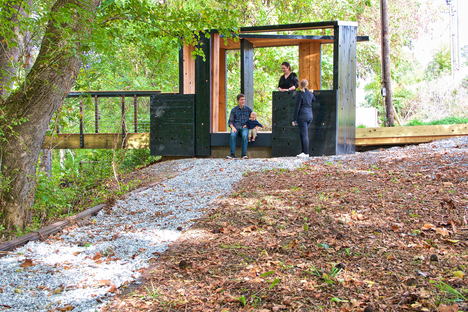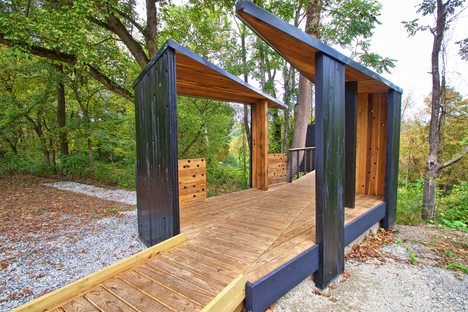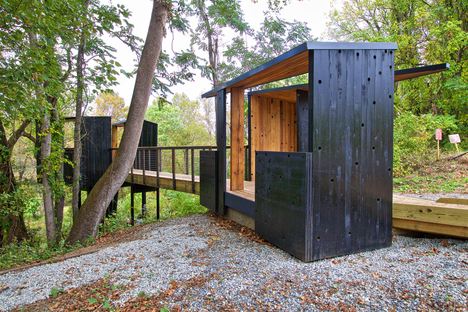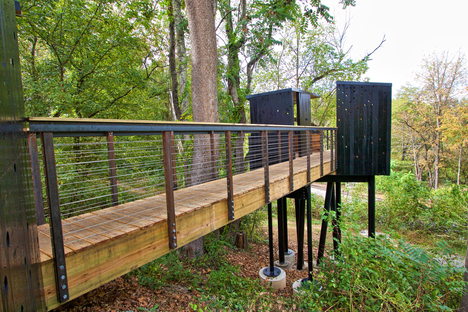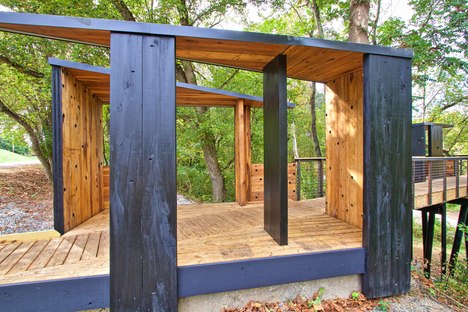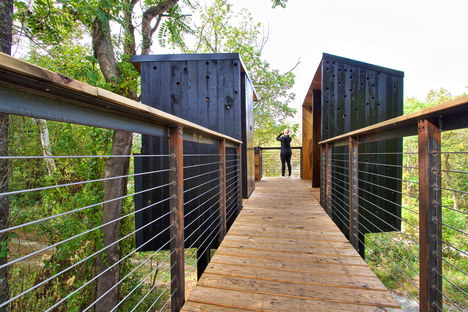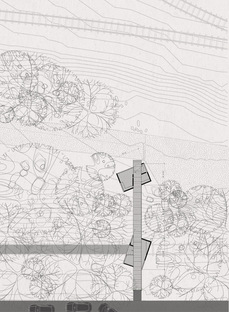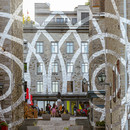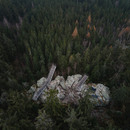26-04-2022
Interdisciplinary study for a low carbon emissions viewpoint
Virginia Tech,
Edward Becker, Kay Edge,
Radford, Virginia, USA,
Wood,
- Blog
- Sustainable Architecture
- Interdisciplinary study for a low carbon emissions viewpoint
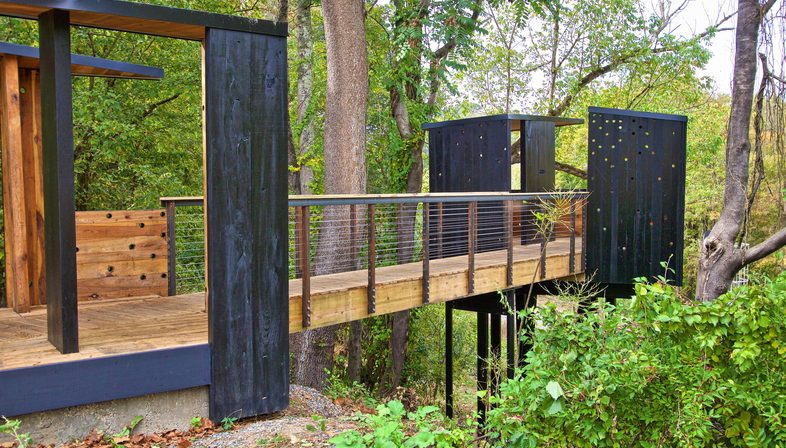 The ambition of sustainable construction limiting carbon emissions inspired the local government of Radford, a riverside town in the state of Virginia, USA, to ask the nearby public university Virginia Tech to help design a new public observation tower to enhance the view over the nearby New River and a historic railway bridge.
The ambition of sustainable construction limiting carbon emissions inspired the local government of Radford, a riverside town in the state of Virginia, USA, to ask the nearby public university Virginia Tech to help design a new public observation tower to enhance the view over the nearby New River and a historic railway bridge. And so an interdisciplinary team of teachers and students worked together for two years to research, design and build a viewpoint structure 22.8 metres long and 9 metres high, employing cross-laminated timber (CLT), a new building technology renowned for its strength and sustainability. But during the process the students realised that shipping the panels to the site would produce carbon emissions with a negative environmental impact, and so the team redesigned the project to reduce its carbon cost by using local resources, a process requiring creative application of locally-sourced raw materials.
These include yellow poplar wood, which grows locally, producing a surplus of hardwood timber. This property was taken into account in the research, leading to development of HCLT: “hardwood cross-laminated timber". In order to make this a low-impact solution, the raw materials used in production of the 1.5 x 3 metre panels were sourced and recycled within a radius of two hundred miles from the project site. The new product developed by the team of Virginia Tech students and faculty offers advanced structural performance incorporating unique architectural features.
Construction of the viewpoint over the New River on a steeply sloped site made it preferable to prefabricate the components of the building, which consists of two modular cubes of HCLT divided by a public walkway. The walkway starts at ground level and culminates in a 6-metre cantilever where the ground slopes steeply down to the river.
The construction project had further surprises in store: a Civil War era building was found beneath the project’s foundations, and so one of the modules had to be entirely prefabricated and lowered into place with a crane, within a tolerance of only 15 cm from the nearby trees.
Since the research project began in 2018, the New River Train Observation Tower has become the world’s first project to make use of HCLT modular construction techniques in a permanent building. It is also a unique example of outdoor use of hard cross-laminated timber structural elements. Every single screw hole was impregnated with liquid wax, and then the entire exterior envelope was coated in a blend of linseed oil and natural pine tar to protect it against damage from UV rays, heat and moisture.
New River Train Observation Tower demonstrates how up-cycling of materials with a low commercial value of local origin can become an opportunity and a reference for sustainable construction with low carbon emissions based on a process of research.
Christiane Bürklein
Project Architects: Virginia Tech - Edward Becker, Kay Edge
Design team: Kirt Hilker, Robert Riggs, and Virginia Tech students
Collaborators: Dr. Daniel Hindman, Dr. Tom Hammett, Dr. Henry Quesada, Dr. Joseph Loferski, Dr. Brian Bond
Location: Radford, Virginia, USA
Year: 2018-2021
Images: Edward Becker, Kay Edge










